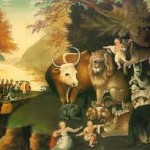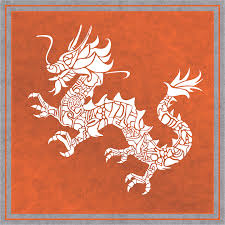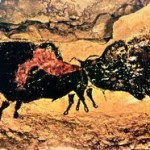The core of the Animal History Museum will be a series of permanent exhibits examining some of the most fundamental interactions between humans and animals. Here’s a glimpse of what’s planned:
The human-animal bond
 This exhibit will examine the often-complex relationships humans can and do form with other creatures in the animal kingdom. This will be done primarily through personal accounts, photographs and videos of individual and family relationships. The exhibit will extend, however, beyond the proverbial man’s best friend. It will include anecdotes of friendship, rivalry, teamwork and other intensely emotional and bonding experiences with all manner of creatures great and small.
This exhibit will examine the often-complex relationships humans can and do form with other creatures in the animal kingdom. This will be done primarily through personal accounts, photographs and videos of individual and family relationships. The exhibit will extend, however, beyond the proverbial man’s best friend. It will include anecdotes of friendship, rivalry, teamwork and other intensely emotional and bonding experiences with all manner of creatures great and small.
This exhibit will also include a scientific look at some of the reasons why humans are able to form such close bonds with other species. For example, ever wonder why the day’s stress melts away when you start to pet Fluffy? It’s not your imagination and you’re not alone. Research shows that people who share their lives with companion animals not only tend to be in better physical health (after all, even chasing after a kitten in the den is more exercise than sitting still, never mind walking a dog or riding a horse), but better emotional health as well. Numerous studies find that companion animals can help relieve depression and loneliness, reduce blood pressure, cholesterol and other levels, and even reduce some of the aggressive and other behaviors associated with Alzheimer’s.
Meanwhile, other science suggests that perhaps we can form deep bonds because, at our cores, humans and non-humans are not so different. For example, chimpanzees share nearly 99% of the same DNA as humans, pigs may be smarter than you think, and even fish feel pain. Exhibits here might include colorful graphs, for example, comparing human and chimpanzee DNA or interactive screens challenging visitors to determine which DNA characteristics belong to which animal.
Animals & intelligence
 Studies show that some dogs have an IQ equivalent to a young toddler; bees have a collective intelligence previously only ascribed to Star Trek’s Borg, squid aren’t just the blobs you might think, and humans aren’t the only primates capable of making tools or communicating ideas, once thought to be the hallmark that separated man from beast. This display will include colorful graphs and photos that map out research into the intelligence of various species, while video clips will show animals from dolphins to elephants passing, for example, the so-called “mirror test.”
Studies show that some dogs have an IQ equivalent to a young toddler; bees have a collective intelligence previously only ascribed to Star Trek’s Borg, squid aren’t just the blobs you might think, and humans aren’t the only primates capable of making tools or communicating ideas, once thought to be the hallmark that separated man from beast. This display will include colorful graphs and photos that map out research into the intelligence of various species, while video clips will show animals from dolphins to elephants passing, for example, the so-called “mirror test.”
It will also profile the intellectual achievements of individual animals. For example, animals like Koko the gorilla or Alex the parrot may be gone, but their intellectual and social exploits were well-documented. This part of the exhibit will be complete with pictures, video, as well as hopefully the personal recollections and artifacts, of the scientists with whom these animals shared their lives.
Meanwhile, interactive panels will allow visitors to “see” the world through the eyes of another creature, for example, the compound vision of a honey bee or the sonar of a dolphin. Other panels will challenge interested visitors to see how they themselves stack up to standard cognitive tests.
Animals in art
 Artists have depicted animals throughout recorded history, from cave paintings to modern-day graffiti, as everything from predators to guardian angels, and using materials from kindergarten popsicle sticks to Rubens’ massive baroque canvases. The possibilities here are as vast as the world of art itself.
Artists have depicted animals throughout recorded history, from cave paintings to modern-day graffiti, as everything from predators to guardian angels, and using materials from kindergarten popsicle sticks to Rubens’ massive baroque canvases. The possibilities here are as vast as the world of art itself.
While animals have traditionally been the subject of art, recently some have also become the artists themselves! The animals in art exhibit will also feature paintings created by cats, elephants and other animals – whose works are increasingly finding their way onto the internet, into books and even a museum dedicated to non-primate art – as well as some context by aficionados and critics as they try to figure out what these artistes might be trying to say.
Animals & myth
 Representations of animals are just as prevalent in literature as they are in art. While many times animals are simply portrayed as, well, animals… interestingly, they have often been imbued with magical qualities.
Representations of animals are just as prevalent in literature as they are in art. While many times animals are simply portrayed as, well, animals… interestingly, they have often been imbued with magical qualities.
Sometimes these fanciful creatures are good, such as the gentle and beautiful unicorn. First appearing in European legends that date back more than a thousand years, it is still beloved today. Other times, these creatures are fearsome. Snakes, for example, have been depicted as evil from the Bible to the most recent Harry Potter movie. Legends of werewolves and vampires have both thrilled and terrified readers for generations, from the printed pages that rolled off 19th century presses into readers’ waiting hands to the hordes of teenagers who gladly wait on line for hours to watch the latest werewolf-and-vampire-fest in The Twilight Saga: Breaking Dawn. Some creatures have been portrayed as both good and evil, depending upon who’s telling the story. While European myths picture dragons as fierce, fire-breathing monsters, Chinese culture depicts them as brave, wise and the protectors of their communities. Meanwhile, still other creatures are neither good nor evil, but rather possess other special characteristics, such as immortality. The phoenix, for example, appears in Egyptian, Greek and Indian story-telling, where despite some differences, all speak of a great bird who rises from the ashes.
Why do authors create animal characters that are capable of thoughts and actions – whether good, evil, determined or hapless – beyond any human’s ability? This exhibit will examine some of those myths, their origins and why audiences can’t seem to get enough of them.
Animals in TV & Film
Like art and literature, animals have been part of television and film ever since, well, ever since there’s been television and film. From the lone coyote howling in classic westerns like The Good, the Bad and the Ugly to Bonzo’s leading role as Cary Grant’s improbable sidekick in the zany comedy Monkey Business, from The Birds to Sesame Street’s Big Bird or Jurassic Park to Barney, animals have captivated audiences – whether in delight, horror or just sheer amazement – in ways that often leave their human co-stars scrambling for their share of the spotlight. As W.C. Fields once quipped, “[n]ever work with animals or children.”
But there’s more to this story. Unlike art and literature, use of animals in TV & film generally requires that the animal participate in the creative process – which may seem very different from the animal’s point of view. Where do these animals come from? What happens on the set and what happens afterward? As with the development of animal welfare laws, the evolution of standards around the use of animals in Hollywood and elsewhere has been an ongoing process, complete with its own controversy and intrigue. Who’s watching the animals and who’s watching the watchers? The back-story of these back lots is just as fascinating as what you see on the screen.
Animals in American pop culture
According to a leading industry survey, 62% of all U.S. households own animals, or 72.9 million homes. A 2009 AP poll reveals that “half of all American pet owners consider their pets as much a part of the family as any other person in the household” and “another 36 percent said their pet is part of the family but not a full member.” That’s nearly 90%! A 2010 Time Magazine poll also shows  that slightly more than 50% of owners consider pets to be family members, while only 33% considered same-sex couples to be family. One look around bears this out: people are increasingly taking their companions on vacation, buying them clothes, spending money on doggie daycares and spas, footing the bill for sophisticated veterinary care, purchasing health insurance policies, providing for their animals in their estate plans and even trying to cheat death by attempting to clone Fido and Fluffy. In fact, the APPA survey predicts that Americans will spend close to $51 billion on their companions this year. Nobody spends that kind of money on something they don’t care about.
that slightly more than 50% of owners consider pets to be family members, while only 33% considered same-sex couples to be family. One look around bears this out: people are increasingly taking their companions on vacation, buying them clothes, spending money on doggie daycares and spas, footing the bill for sophisticated veterinary care, purchasing health insurance policies, providing for their animals in their estate plans and even trying to cheat death by attempting to clone Fido and Fluffy. In fact, the APPA survey predicts that Americans will spend close to $51 billion on their companions this year. Nobody spends that kind of money on something they don’t care about.
This exhibit will feature some of the increasingly common – as well as the still-unusual – things that owners buy and do for their companions. In addition to the nearly limitless choice of consumer goods potentially available to display, the museum also hopes to offer video screens to play clips from some of the countless times that animals and the humans who interact with them have been portrayed in the media, from Mr. Ed on TV, to Sigourney Weaver as Jane Goodall in Gorillas in the Mist, to CBS Sunday Morning’s annual issue on Animals.
The history of animals in society
 Cave paintings offer clues that, at least since the earliest recorded history, humans have interacted with the other million species around us in ways that have ranged from fleeing in terror to sharing our primitive homes. This exhibit will chronicle how ancient societies have viewed animals from The Laws of Ur-Nammu, the earliest known codes believed to date back to approximately 2100 B.C., which established what amounted to criminal penalties for conduct such as “oxen-taker” – to the development of the Romans’ legal distinction between “person” and “thing” in laws such as “[i]f anyone kills unlawfully a slave or servant-girl belonging to someone else or a four-footed beast of the class of cattle, let him be condemned to pay the owner the highest value that the property had attained in the preceeding [sic] year” – to the English common law practice of putting animals on trial for their crimes and punishing them. Display panels will feature animal-related sections of ancient codes, such as the Code of Hammurabi or Napoleonic Code, along with a discussion of those codes. Other panels – interspersed as space permits – will feature depictions of animals in ancient art that reflected the laws of the time, from cave drawings to Egyptian hieroglyphics to 19th century oils by European master painters. The exhibit is intended to give a broad overview of man’s perspectives about, and treatment of, animals throughout recorded history up to the 1800’s.
Cave paintings offer clues that, at least since the earliest recorded history, humans have interacted with the other million species around us in ways that have ranged from fleeing in terror to sharing our primitive homes. This exhibit will chronicle how ancient societies have viewed animals from The Laws of Ur-Nammu, the earliest known codes believed to date back to approximately 2100 B.C., which established what amounted to criminal penalties for conduct such as “oxen-taker” – to the development of the Romans’ legal distinction between “person” and “thing” in laws such as “[i]f anyone kills unlawfully a slave or servant-girl belonging to someone else or a four-footed beast of the class of cattle, let him be condemned to pay the owner the highest value that the property had attained in the preceeding [sic] year” – to the English common law practice of putting animals on trial for their crimes and punishing them. Display panels will feature animal-related sections of ancient codes, such as the Code of Hammurabi or Napoleonic Code, along with a discussion of those codes. Other panels – interspersed as space permits – will feature depictions of animals in ancient art that reflected the laws of the time, from cave drawings to Egyptian hieroglyphics to 19th century oils by European master painters. The exhibit is intended to give a broad overview of man’s perspectives about, and treatment of, animals throughout recorded history up to the 1800’s.
The rise of animal welfare, rights and law in the U.S.
 Starting with Henry Bergh in the mid- 1800’s, Americans have taken an increasing interest in the wellbeing of the animals around them. Exhibits here will track the development of welfare laws from Bergh’s founding of the ASPCA in 1866 and his effort to enact the nation’s first anti-cruelty law in New York the next year (which he then walked the streets to enforce himself!), to present day, where 46 out of 50 states now provide felony penalties for animal cruelty. The exhibit will also highlight some of the major reforms in recent memory – such as the campaign to end cosmetics testing in the 1970’s and the recent passage of California’s Proposition 2. From community activists to national organizations like the A.S.P.C.A, millions of people are engaged in all aspects of animal welfare. This exhibit hopes to convey the vastness of – as well as the social context surrounding – these efforts, through written wall panels as well as photos, draft papers and other memorabilia as possible.
Starting with Henry Bergh in the mid- 1800’s, Americans have taken an increasing interest in the wellbeing of the animals around them. Exhibits here will track the development of welfare laws from Bergh’s founding of the ASPCA in 1866 and his effort to enact the nation’s first anti-cruelty law in New York the next year (which he then walked the streets to enforce himself!), to present day, where 46 out of 50 states now provide felony penalties for animal cruelty. The exhibit will also highlight some of the major reforms in recent memory – such as the campaign to end cosmetics testing in the 1970’s and the recent passage of California’s Proposition 2. From community activists to national organizations like the A.S.P.C.A, millions of people are engaged in all aspects of animal welfare. This exhibit hopes to convey the vastness of – as well as the social context surrounding – these efforts, through written wall panels as well as photos, draft papers and other memorabilia as possible.
While animal welfare seeks to improve the treatment of animals, animal rights (as the name implies) seeks to grant animals a better legal status. Oddly, this notion is usually traced back to Peter Singer’s 1975 book “Animal Liberation,” which did not use the phrase “animal rights” at all. The book actually focused on utilitarian theory, suggesting that a chicken has a greater interest in its continued life than a person has in eating chicken for dinner, so the chicken’s interests should prevail. The exhibit here begins with Singer’s unique – and still controversial – book. It continues with some of the groups that sprung up as Singer’s ideas picked up steam – examining the issues they pushed for and the forces that pushed back – illustrating how this social movement adapted as times changed through timelines, display panels, photographs, personal recollections and memorabilia as possible.
When protests and paint throwing did not produce the sweeping changes sought, the next generation of animal advocates went to law school. Since the early 1990’s, the number of law schools offering one or more animal law courses has grown from 0 to more than 130. The exhibit will look at the efforts of attorneys – from major social impact litigation to try to improve the psychological well-being of research primates to individual trials over the untimely demise of a single cat – to chip away at the legal wall that has separated “people” from “things” since the Roman Empire.
Vegetarian & vegan trends
 A 2008 Harris poll showed that more than 30 million Americans consider themselves either vegetarian or “vegetarian-inclined.” Of that number, roughly one million were vegan, meaning they consume no animal products at all. For museum-goers in this demographic, this exhibit will allow them to track the history and growth of a trend they helped establish. For other museum-goers, such as the roughly 12 million who indicated that they are “’definitely interested’ in following a vegetarian-based diet in the future,” this exhibit will provide an opportunity to explore those interests. Even for those with no intention of refraining from animal products, whether for ethical, personal health or any other reason, this exhibit still offers a good opportunity to understand an opposing point of view in the tranquility of a non-judgmental museum environment.
A 2008 Harris poll showed that more than 30 million Americans consider themselves either vegetarian or “vegetarian-inclined.” Of that number, roughly one million were vegan, meaning they consume no animal products at all. For museum-goers in this demographic, this exhibit will allow them to track the history and growth of a trend they helped establish. For other museum-goers, such as the roughly 12 million who indicated that they are “’definitely interested’ in following a vegetarian-based diet in the future,” this exhibit will provide an opportunity to explore those interests. Even for those with no intention of refraining from animal products, whether for ethical, personal health or any other reason, this exhibit still offers a good opportunity to understand an opposing point of view in the tranquility of a non-judgmental museum environment.
 Vegetarian and vegan cuisine is also becoming big business. Although statistics seem scarce, at least one estimate put the value of the vegetarian food industry at $1.5 billion as long ago as 2002. Again, even a casual look around shows an ever-increasing range of options in everything from frozen foods to fine dining restaurants. One display panel, for example, may chronicle the growth of the increasingly competitive meat substitute industry, such as Boca and Morningstar brands. Another display may look at the growth in vegetarian/vegan restaurants nationwide, such as Chicago’s uber-trendy Green Zebra vegetarian restaurant, and Loving Hut, casual-eatery-turned- nation’s-fastest-growing vegan chain with more than 200 stores worldwide. The exhibit will also look at notable events in the history of vegan cuisine, such as two vegan bakers who pulled out all of the creamy and gooey stops to win their respective episodes of the Food Network’s Cupcake Wars despite battling directly against buttercream-armed competition. In April 2011, the Cooking Channel aired “The Veg Edge”, examining the growth in popularity of these cuisines. In Portland, Oregon, there’s a mini-mall specifically for vegan businesses. And perhaps the nation’s biggest food craze right now – food trucks – is not without its own devotees to the veggie philosophy.
Vegetarian and vegan cuisine is also becoming big business. Although statistics seem scarce, at least one estimate put the value of the vegetarian food industry at $1.5 billion as long ago as 2002. Again, even a casual look around shows an ever-increasing range of options in everything from frozen foods to fine dining restaurants. One display panel, for example, may chronicle the growth of the increasingly competitive meat substitute industry, such as Boca and Morningstar brands. Another display may look at the growth in vegetarian/vegan restaurants nationwide, such as Chicago’s uber-trendy Green Zebra vegetarian restaurant, and Loving Hut, casual-eatery-turned- nation’s-fastest-growing vegan chain with more than 200 stores worldwide. The exhibit will also look at notable events in the history of vegan cuisine, such as two vegan bakers who pulled out all of the creamy and gooey stops to win their respective episodes of the Food Network’s Cupcake Wars despite battling directly against buttercream-armed competition. In April 2011, the Cooking Channel aired “The Veg Edge”, examining the growth in popularity of these cuisines. In Portland, Oregon, there’s a mini-mall specifically for vegan businesses. And perhaps the nation’s biggest food craze right now – food trucks – is not without its own devotees to the veggie philosophy.
The food exhibit will feature large, colorful photos of food wherever possible (admit it – even a veggie burger can look mouth-watering to a die-hard carnivore when it’s smothered in grilled onions, nestled between garden-fresh tomato and baby lettuce, then tucked into a fresh and lightly-charred bun) as well as an interactive display where visitors can guess at methods, quantities and animal-friendly substitutes for popular recipes. For example, looking to skip the dairy? Try almond milk. Giving up honey? Try agave syrup. Veganism. It ain’t just for tofu anymore.
